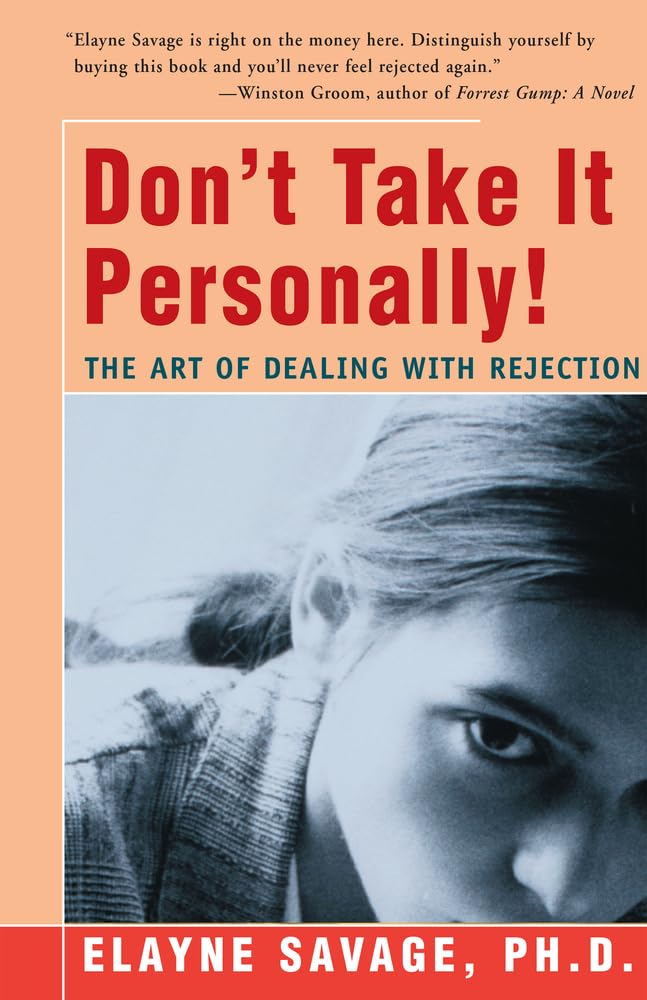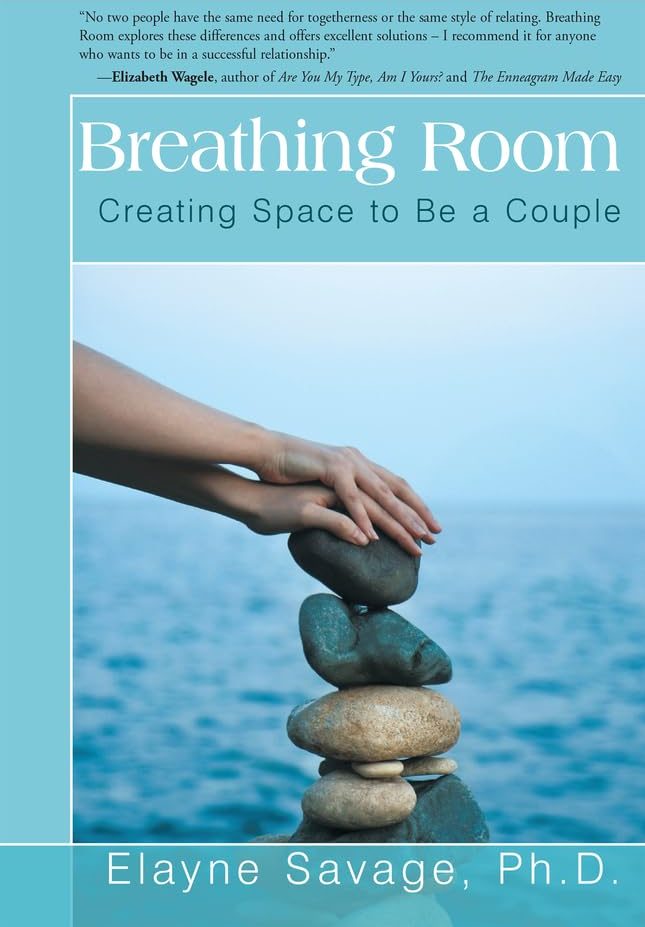by Elayne Savage, PhD
I’ve been thinking a lot about blind spots lately. Mine and other peoples.
Blind spots are those traits about ourselves we just don’t see, although other folks do.
My favorite quote about blind spots is from the 2001 movie Yi Yi.
“I can't see what you see and you can't see what I see. How can we know more than half the truth?"
Yi Yi is the family's wise young son who takes pictures of the backs of people's heads. "You couldn't see it," he says, "so I showed you."
As we soon discover in the movie, what the people cannot see is what they choose not to see. Yi Yi goes around taking pictures of their pain.
And it is the same with our own blind spots. Where does this lack of ability to “see” ourselves come from?
Those Submerged Parts of Yourself
Often, we are unable to acknowledge certain aspects of ourselves. Parts of our personalities stay hidden from us because they are not acceptable to us. This is what Carl Jung called the shadow—the dark part, the part we don’t want to know about ourselves, and wish wasn’t there.
How does this come about? In childhood we begin to notice we bring on someone’s displeasure by displaying certain emotions or behaviors or ideas or attitudes. Sometimes these messages are cultural or gender-connected.
In other words, these emotions or actions were unacceptable to others. We interpreted this as “bad,” so we submerged them.
The bottom line is we forget to look in the mirror and we lose our authentic self somewhere along the way.
Robert Johnson, in Owning Your Own Shadow, reminds us that these “refused and unacceptable characteristics do not go away; they only collect in the dark corners of our personality.”
They especially begin to seep out when we judge or criticize others. We often cannot tolerate in others the very same traits we can’t stand about ourselves.
Through a process called projection, we mistakenly imagine these unacceptable traits exist in the other person when we cannot acknowledge them in ourselves. In other words, these traits are most likely our blind spots.
A woman I know says, “If we can’t own our own stuff, we try to give it away to someone else. In a way, projection protects us from ourselves by spreading the garbage around.”
Let’s Talk About Projection
These “blind spots” can certainly affect relationships with other people. Traits you project onto others might include your sadness, your anger, your tendency to be snarky or cynical or patronizing or manipulative or flirtatious or competitive or controlling.
Might these be your own characteristics? Your own blind spots?
What can you add to this list?
Projection often involves blaming the other person for our own limitations. And most of us are all too aware that blame creates resentment and resentment takes up so much space in relationships there is no room for connection and intimacy.
Those Rejected Parts of Yourself
Robert Johnson says some of these hidden characteristics are “pure gold”—but we end up rejecting these parts of ourselves because they were unwelcome to our family or society.
Recognizing these disavowed parts and owning your shadow side as well as your more desirable features is an important part along the road of getting to know yourself. Intimacy with yourself is the key to acquiring the capacity for intimacy with another person..
By getting to know yourself, you can identify and do something about your needs for closeness and distance and not have to be constantly refereeing that internal conflict.
What about you? What might your shadow side be? Where does it come from and why did you have a need to hide it away? Are you able to identify it in yourself or do you deal with it through spotting it in other people? How often does this happen in your personal relationships? In the workplace?
It’s pretty hard to change something if you are not even aware of it. So by recognizing, identifying and becoming an objective observer, you can put yourself in a position to make some choices about how you want to “be” in relationships.
When you begin to notice that you are becoming judgmental of someone or that you simply can’t stand them, it just might be you are recognizing your own behavior! This act of noticing is a great way to get to know yourself.
The best way to change something is to notice it. Yep. It’s really difficult to do something differently if you can’t see it.
Why not practice walking alongside yourself, noticing your thoughts and feelings and reactions. Then decide if you want to keep walking down the same path or if you want to go back to the fork in the road and try out another path.
Will the Real You Please Stand Up?
Next, become aware of how rejection plays a role here – especially judgments and criticism. By recognizing signs of rejection and noticing how you react to it, you're taking the first steps in giving yourself some distance and the opportunity to do something differently.
Recognizing the disavowed parts, the dark side, leaves less room for critical judgment of others and of yourself as well. Owning your shadow side as well as your more desirable features is an important part of the road to self-acceptance—to wholeness.
There’s a lot of room in there for all the parts to coexist. Why not encourage them to befriend each other? Each part could teach the others quite a few things. They all have information to share, but you’ll find some of them are more talkative than others. Try getting to know them.
What are Your Blind Spots?
Of course if they really are blind spots, you may answer, "I don't know. I don't see any.” Often however the submerged traits are floating just below the surface and with a little attention can become accessible.
A good analogy of blind spots of course is about driving a car: The standard blind spot analogy typically describes an area immediately outside your own vehicle, yet close enough so that you cannot see objects in these areas by using your side mirrors alone.
Good ideas for cars and relationships: Look out for potential dangers and don’t forget to look in your mirror or even turn your head and look around you!
© Elayne Savage, PhD
Parts of this e-letter/blog are excerpted from Don’t Take It Personally! and Breathing Room
Until next month,
Elayne
Elayne Savage is the author of ground-breaking relationship books published in 9 languages.
Both books are now available on Kindle!
To order DON'T TAKE IT PERSONALLY! THE ART OF DEALING WITH REJECTION
To order BREATHING ROOM — CREATING SPACE TO BE A COUPLE
REPRINTING THESE e-LETTERS
You can use the articles in 'Tips from The Queen of Rejection'® as long as you include an attribution and, whenever possible, a live link to my website. I'd appreciate if you'd notify me where and when the material will appear.
The attribution should include this information: Elayne Savage, PhD is a communication coach, keynote speaker, and trainer, practicing psychotherapist and author of Don't Take It Personally! The Art of Dealing with Rejection and Breathing Room – Creating Space to Be a Couple.
To find out more about my speaking programs, coaching and consultation services visit: //www.QueenofRejection.com or call 510-540-6230 if you or your group can benefit.
Contacting Elayne
I welcome your feedback as well as suggestions for topics you'd like to see addressed in this e-letter.
Here's how you can reach me:
510-540-6230
www.QueenofRejection.com
For more communication and rejection tips, you can follow me:
Twitter@ElayneSavage
LinkedIn.com/in/elaynesavage
Facebook.com/elayne.savage


Leave a Reply to Susan Ward Cancel reply